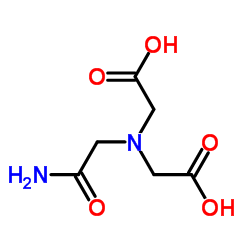ADA

ADA structure
|
Common Name | ADA | ||
|---|---|---|---|---|
| CAS Number | 26239-55-4 | Molecular Weight | 190.154 | |
| Density | 1.5±0.1 g/cm3 | Boiling Point | 524.9±45.0 °C at 760 mmHg | |
| Molecular Formula | C6H10N2O5 | Melting Point | 219 °C (dec.)(lit.) | |
| MSDS | Chinese USA | Flash Point | 271.3±28.7 °C | |
|
Effect of hyperoxic and hyperbaric conditions on the adenosinergic pathway and CD26 expression in rat.
J. Appl. Physiol. 119 , 140-7, (2015) The nucleoside adenosine acts on the nervous and cardiovascular systems via the A2A receptor (A2AR). In response to oxygen level in tissues, adenosine plasma concentration is regulated in particular via its synthesis by CD73 and via its degradation by adenosi... |
|
|
Adenosine A2AR blockade prevents neuroinflammation-induced death of retinal ganglion cells caused by elevated pressure.
J. Neuroinflammation 12 , 115, (2015) Elevated intraocular pressure (IOP) is a major risk factor for glaucoma, a degenerative disease characterized by the loss of retinal ganglion cells (RGCs). There is clinical and experimental evidence that neuroinflammation is involved in the pathogenesis of g... |
|
|
Chemotherapeutic agents attenuate CXCL12-mediated migration of colon cancer cells by selecting for CXCR4-negative cells and increasing peptidase CD26.
BMC Cancer 15 , 882, (2015) Recurrence of colorectal cancer (CRC) may arise due to the persistence of drug-resistant and cancer-initiating cells that survive exposure to chemotherapy. Proteins responsible for this recurrence include the chemokine receptor CXCR4, which is known to enable... |
|
|
Adenosine A2B receptor activation stimulates glucose uptake in the mouse forebrain.
Purinergic Signal. 11 , 561-9, (2015) ATP consumption during intense neuronal activity leads to peaks of both extracellular adenosine levels and increased glucose uptake in the brain. Here, we investigated the hypothesis that the activation of the low-affinity adenosine receptor, the A2B receptor... |
|
|
IgE antibodies and skin tests in immediate hypersensitivity reactions to infliximab in inflammatory bowel disease: impact on infliximab retreatment.
Eur. J. Gastroenterol. Hepatol. 27 , 1200-8, (2015) Infliximab (IFX) is used for the treatment of inflammatory bowel diseases (IBD). Immediate hypersensitivity reactions (HR) to IFX are frequently reported.We investigated immunoglobulin E (IgE)-mediated mechanisms underlying immediate HR to IFX. We also evalua... |
|
|
Modulatory effect of Senecio brasiliensis (Spreng) Less. in a murine model of inflammation induced by carrageenan into the pleural cavity.
J. Ethnopharmacol. 168 , 373-9, (2015) Senecio brasiliensis (Spreng) Less (S. brasiliensis), known as "Flor-das-almas", "Margaridinha" or "Maria mole", is used in folk medicine as an anti-inflammatory and to treat gastric ulcers and stomach pain. While the Senecio genus has been widely studied for... |
|
|
Alginate-based hydrogels with improved adhesive properties for cell encapsulation.
Int. J. Biol. Macromol. 78 , 72-8, (2015) Hydrogel-based biomaterials are ideal scaffolding matrices for microencapsulation, but they need to be modified to resemble the mechanical, structural and chemical properties of the native extracellular matrix. Here, we compare the mechanical properties and t... |
|
|
Adapalene inhibits the activity of cyclin-dependent kinase 2 in colorectal carcinoma.
Mol. Med. Report. 12 , 6501-8, (2015) Cyclin-dependent kinase 2 (CDK2) has been reported to be overexpressed in human colorectal cancer; it is responsible for the G1‑to‑S‑phase transition in the cell cycle and its deregulation is a hallmark of cancer. The present study was the first to use idock,... |
|
|
Real-time monitoring of extracellular adenosine using enzyme-linked microelectrode arrays.
Biosens. Bioelectron. 74 , 512-7, (2015) Throughout the central nervous system extracellular adenosine serves important neuroprotective and neuromodulatory functions. However, current understanding of the in vivo regulation and effects of adenosine is limited by the spatial and temporal resolution o... |
|
|
An adenosine kinase inhibitor, ABT-702, inhibits spinal nociceptive transmission by adenosine release via equilibrative nucleoside transporters in rat.
Neuropharmacology 97 , 160-70, (2015) Adenosine kinase (AK) inhibitor is a potential candidate for controlling pain, but some AK inhibitors have problems of adverse effects such as motor impairment. ABT-702, a non-nucleoside AK inhibitor, shows analgesic effect in animal models of pain. Here, we ... |